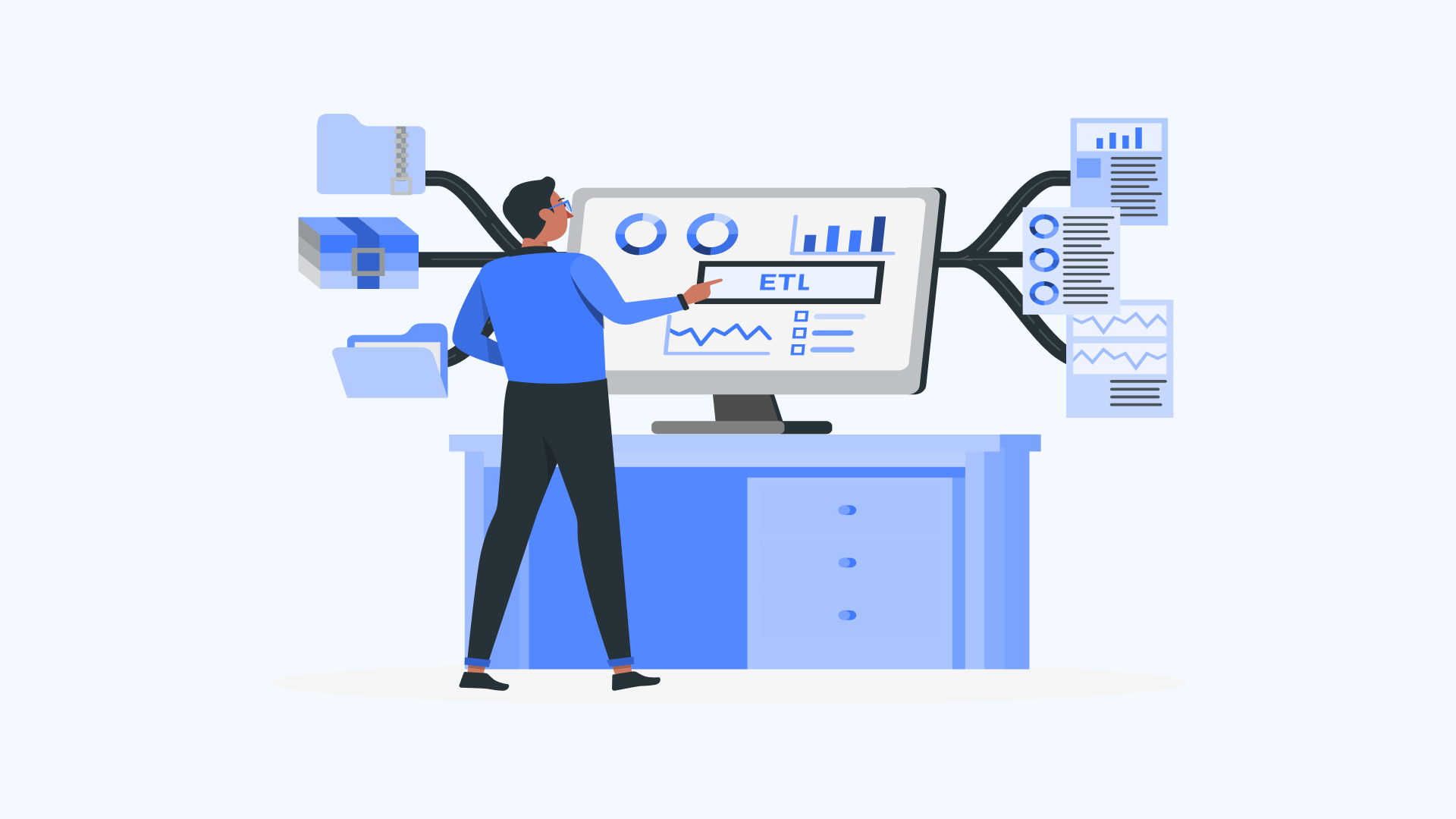It's quite common that every business leader likes to get impactful analytics immediately from the teams. If you are one such, you may expect quick reporting, easy-to-use dashboards, fast and accurate answers to all your questions. Even CFOs or marketing leaders expect to utilize the data better to make insightful business decisions.
However, a robust data strategy is a prerequisite for analytics implementation. The most common element in this scope is data management architecture known as ETL – Extract, Transform, and Load. Of course, ETL doesn't sound exciting, but it will help you get where you want to go and become a significant part of the entire data story.
ETL – Extract, Transform, and Load
The ETL is a kind of data integration referred to as an extract or collects the most relevant data from multiple systems in the organization; transformed into the right format where it is analyzed and stored or loaded into a data warehouse or other method.
ETL and its Importance
Businesses depended on the ETL process for years to view the data in a consolidated way to make better business decisions. Integrating the data from multiple systems and sources plays a significant role in every organization's integration stack.
Do many people ask why we're in the cloud and need ETL? Is it essential to the businesses on the cloud? The answer is an absolute 'YES.' Businesses need RTL in the cloud is the same as they need in a traditional data warehouse. The data must be brought to a centralized repository, and huge numbers need to be transformed into various formats that help analyze. ETL prepares information for fast access and gives better insights.
It provides deep context for the businesses with a consolidated view on reports analytics that helps your initiative. The ETL can improvise productivity as it codifies the processes and moves the data without technical stuff like complex codes and scripts.
ETL In Action
How ETL works and what exactly happens in Extract, Transform, and Load reflects the ETL. Let's look into that in short.
Extract
The meaning of 'extract,' raw data extraction is copied and exported to source locations in the staging areas. The sources aren't just limited to SQL or NoSQL servers, CRM and ERP systems, or web pages.
Transform
The data transformation is magical, turning the data into more usable. It is complete, cleaned, and transformed to align how businesses want to analyze the data in a data warehouse. It ensures better data quality by reformatting and restructuring the data.
Load
The final stage is loading, in which the transformed data gets loaded into a data warehouse where businesses can access that with ease for future use in reports and dashboards. Based on the business needs, the process may perform in real-time or batch modes.
Journey in the Past
ETL became very popular during the 1970s when businesses started using multiple data repositories to store different types of information. Hence, the need to integrate segregated data across various databases rapidly increased.
In the late 1980s and 1990s, data warehouses were in the spotlight. They provide integrated access to the entire data from multiple systems. But, various departments still preferred ETL tools to use in different data warehouses.
With the rapid expansion of data formats, systems, and sources, the extract, transform, and Load is now the best in organizations for complex data management processes. It has become a significant part of the data integration strategy.
ETL in today's world
The world of data is evolving from time to time, and they are different from the traditional ETLs that are on-premises which are generally bundled with several roadblocks. The conventional ETL lacks sophisticated features and functionality. They are expensive and time-consuming to maintain as they support only batch processing and cannot scale well.
The modern ETLs capture, transform and store the data from millions of transactions across the data streams and sources. This capability opened new doors in data integration and opportunities to leverage the AI to create predictive models and develop new revenue streams, cloud migration, and more.
The future of ETL
Many businesses think that cloud and big data are the future of ETL, which reverses that. They are the present trend in the ETL. Enterprises have plans for cloud data migration. The amount of data collected, which is structured operational data or data from IoT, will outgrow the abilities to handle the traditional and on-premises data warehouses. So what can we expect in the next decade of data management and transformation.
Rapid data growth – Data continuously grows, and we can expect more to come. The IoT will continue expanding and improving the business's role and lives. It continues to outgrow the legacy systems and needs to move to the cloud. We all need cloud-native tools to help in managing, integrating, and transforming the data.
Machine Learning and AI
Getting ready for machine learning and AI data becomes more crucial for the ETL as the next best thing and it will continue to expand.
Democratization of Data
In the future decades, the data is not just for the data professionals. Businesses need employees to make data-driven decisions, which means the information is centralized, and the tools will reduce manual intervention. Companies utilize the complete end-to-end data transformation capabilities in IT that include both batch and streaming capabilities. Organizations will adopt self-serve to gain actionable insights and achieve a competitive edge.
Let us help you automate your ETL strategy
Quickwork ETL automation leverages the speed and scale of the ETL processes and quickly transforms your data to make it analytics-ready.
To learn more about the Quickwork iPaaS platform, Connect with our team today!








